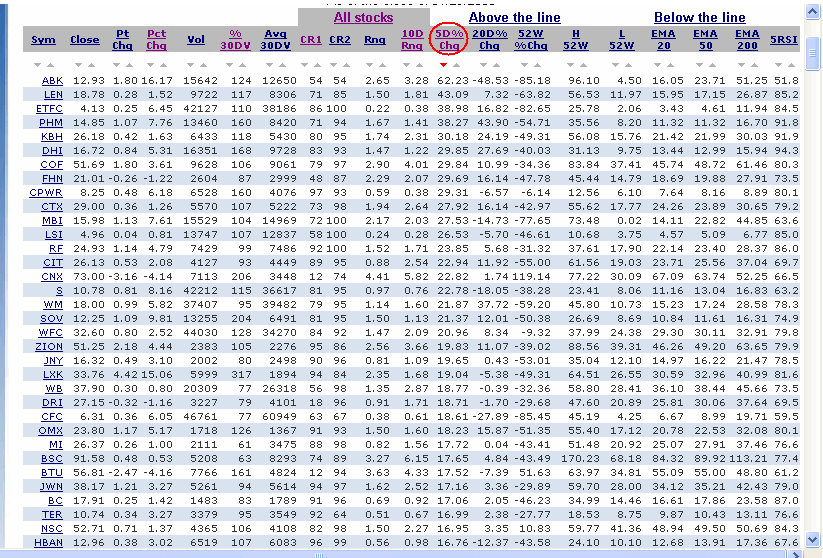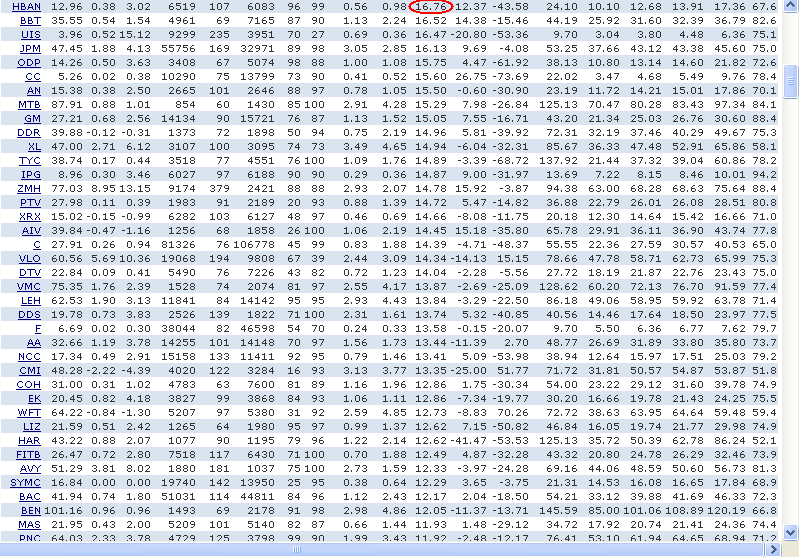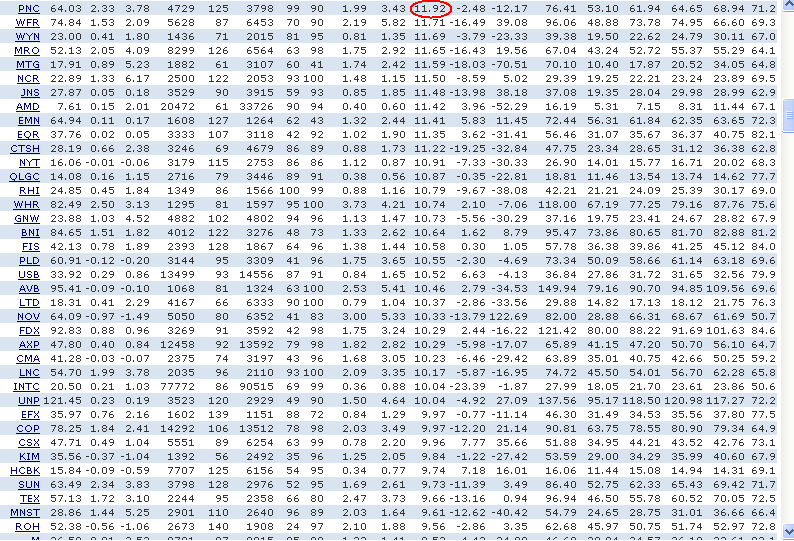Most Important 60 Minutes for Traders
Kevin Haggerty is a
full-time professional trader who was head of trading for Fidelity Capital
Markets for seven years. Would you like Kevin to alert you of opportunities in
stocks, the SPYs, QQQQs (and more) for the next day’s trading?
Click here for a free one-week trial to Kevin Haggerty’s Professional
Trading Service or call 888-484-8220 ext. 1.
The $XBD (+1.6%) and $BKX (+2.0%) continue to lead after the .75 basis rate
point cut and in front of today’s expected cut by the Fed. The $BKX is +5.6%
this week so far, and is +16.8% for the past 7 days. The $XBD is +5.4% and
+12.2% for the same period. The homebuilders and other financials, like the bond
insurers, have made the most significant gains. I included my S&P 500 trading
screen today, which is sorted by the 5-day % change, since the SPX 1270.05 low.
The screen highlights the double digit gains for the past 5 days.
There were 2 significant trading decisions for daytraders in the first hour
yesterday, and those of you who have the trading modules are familiar with my
First Hour strategies. The SPX advanced to the 1364-1371 key price zone on the
9:40 AM bar to 1363.14, up from the previous 1353.96 close. This set up an RST/Trap
Door entry that declined to 1350.19 on the 10:00 AM bar. There were also RST
entries for the IWM, which declined -1.4% from entry, and the QQQQ at -1.1%. The
10:00-10:15 AM period very often reverses a trend, and that is what the major
indexes did yesterday. The SPX advanced to 1362.82, and then went sideways until
the 3:00 PM bar, where it popped to a new 1364.88 intraday high from 1359.44,
before closing at 1362.30. There are just 2 trading days left in the month, so
with a rate cut today, the Generals should be able to push price through the
1364-1371 zone and set up a short opportunity next week.
The increased volatility in this bear market decline has been a significant
bonus to daytraders but you sometimes have to make adjustments for the increased
volatility by decreasing your position size to accommodate wider stops, so you
don’t alter your max risk per trade. You just divide your max risk per trade in
dollars by the stop amount for the position size on the trade. For example, if
your max risk is $200, and your stop is .50, then your position size is 400
shares (200/.50). However, the market dictates when you exit a trade, not the
stop, and most often you will be out of the trade before your max risk is hit.
If you take high probability setups, with a low common denominator entry, you
will usually get 2 trades for the max risk of 1 trade.
The S&P Futures are -4.5 points as of 8:15 AM ET, and a discount opening
period will provide the best long opportunities for today. But don’t expect much
after that when the market goes quiet before the Fed.
Check out Kevin’s strategies and more in
the
1st Hour Reversals Module,
Sequence Trading Module,
Trading With The Generals 2004 and the
1-2-3 Trading Module.
Have a good trading day,
Kevin Haggerty



